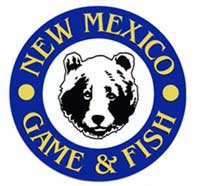

ALBUQUERQUE, N.M. -(Ammoland.com)- The Mexican wolf Interagency Field Team (IFT) completed the annual year-end population survey, documenting a minimum of 113 Mexican wolves in the wild in Arizona and New Mexico at the end of 2016. This compares with a minimum of 97 wild wolves in 2015.
“We are encouraged by these numbers, but these 2016 results demonstrate we are still not out of the woods with this experimental population and its anticipated contribution to Mexican wolf recovery,” said U.S. Fish and Wildlife Service Southwest Regional Director Benjamin Tuggle. “Our goal is to achieve an average annual growth rate of 10 percent in the Mexican wolf population. Although there was a one-year population decline in 2015, due in part to a high level of mortality and a lower pup survival rate, there are now more Mexican wolves in the wild in New Mexico and Arizona. The Service and our partners remain focused and committed to making this experimental population genetically healthy and robust so that it can contribute to recovery of the Mexican wolf in the future. We all understand the challenges we face as we try to increase the wild population of this endangered species.”
In the spring of 2016, the IFT successfully fostered six genetically diverse pups from the captive breeding program into similarly aged litters of established packs in the wild.
Cross-fostering was first implemented in 2014 when a male and female pup were placed in the Dark Canyon pack’s den in New Mexico.
Last summer, the IFT observed that cross-fostered male disperse from his pack and is traveling with a female wolf. The IFT also confirmed the cross-fostered female is now the breeding female in the Leopold pack.
“The population is showing an increase in wild-born wolves and we expect the growth rates observed this year to continue into the future,” said Jim deVos, Assistant Director of Wildlife Management for the Arizona Game and Fish Department. “The success of this program is due to our on-the-ground partnerships. We have every reason to believe that our efforts at reintroduction will continue to be successful.”
The results of the survey reflect the end-of-year minimum experimental population for 2016. Results come from population data collected by the IFT on the ground from November through December of 2016, as well as from an aerial survey conducted in January and February 2017.
This number is considered a minimum number of Mexican wolves known to exist in the wild in Arizona and New Mexico; other Mexican wolves may be present.
The aerial survey was conducted by fixed-wing aircraft and helicopter. Biologists used radio telemetry and actual sightings of wolves to help determine the count.
The results from the aerial survey, coupled with the ground survey conducted by the IFT, confirmed:
- There are a total of 21 packs, with a minimum of 50 wolves in New Mexico and 63 wolves in Arizona.
- The 2016 minimum population count includes 50 wildborn pups that survived through the end of the year compared to 23 pups surviving in 2015.
- Six wolf pups were cross-fostered in 2016. Three are known to be alive, one of which is radio collared.
There were 13 documented Mexican wolf mortalities in 2016. Two mortalities occurred during last year’s count and 11 are under investigation by the Service’s Office of Law Enforcement in an effort to determine cause of death.
If available, more information will be provided in the 2016 annual report.
The Mexican wolf is the rarest subspecies of gray wolf in North America. Once common throughout portions of the southwestern United States and Mexico, it was all but eliminated from the wild by the 1970s.
In 1977, the Service initiated efforts to conserve the species by developing a bi-national captive breeding program with seven Mexican wolves. In 1998, Mexican wolves were released to the wild for the first time in Arizona and New Mexico within the Mexican Wolf Experimental Population Area.
The Mexican wolf recovery program is a partnership between the Service, Arizona Game and Fish Department, White Mountain Apache Tribe, USDA Forest Service and USDA Animal and Plant Health Inspection Service – Wildlife Services, and several participating counties.
For more information on the Mexican Wolf Reintroduction Program, visit their website.
